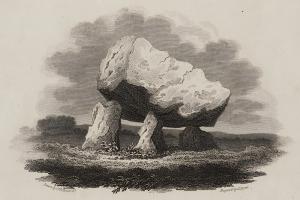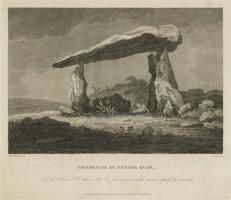Text this colour links to Pages. Text this colour links to Family Trees. Text this colour are links that are disabled for Guests.
Place the mouse over images to see a larger image. Click on paintings to see the painter's Biography Page. Mouse over links for a preview. Move the mouse off the painting or link to close the popup.
All About History Books
The Chronicle of Geoffrey le Baker of Swinbroke. Baker was a secular clerk from Swinbroke, now Swinbrook, an Oxfordshire village two miles east of Burford. His Chronicle describes the events of the period 1303-1356: Gaveston, Bannockburn, Boroughbridge, the murder of King Edward II, the Scottish Wars, Sluys, Crécy, the Black Death, Winchelsea and Poitiers. To quote Herbert Bruce 'it possesses a vigorous and characteristic style, and its value for particular events between 1303 and 1356 has been recognised by its editor and by subsequent writers'. The book provides remarkable detail about the events it describes. Baker's text has been augmented with hundreds of notes, including extracts from other contemporary chronicles, such as the Annales Londonienses, Annales Paulini, Murimuth, Lanercost, Avesbury, Guisborough and Froissart to enrich the reader's understanding. The translation takes as its source the 'Chronicon Galfridi le Baker de Swynebroke' published in 1889, edited by Edward Maunde Thompson. Available at Amazon in eBook and Paperback.
An Historical Tour through Pembrokeshire is in Georgian Books.
A Historical Tour through Pembrokeshire. By Richard Fenton. Esq. 1811.

Call on my friend John Evans, Esq. of Glastir, and in company with him and a guest of his, the Reverend Mr. Owen, who was then on a visit to his native country after an absence of twenty-one years, ride to see Llech y dribedd [Map], one of the most perfect of that species of druidical relics called Cromlech we have in the county, with a representation of which, from the fine pencil of Sir Richard Hoare, the frontispiece is enriched. It is supported on three upright stones of no great height; there was another stone, as is frequently seen but not in contact, overturned. The incumbent stone is not so flat as usual, being of immense bulk, and about forty feet in circumference, nearly round, and its mean thickness from three to four feet. The stone is of a very peculiar kind, being of a blueish colour, very hard, yet yielding a little to an edged tool; the south-east side of the stone being superficially marked all over with initials of names for these two hundred years, and one corner worn down into a perfect hone by the shepherds. Mr. Evans, my Cicerone, who is the proprietor of this venerable relic, with a zeal which does him honour, takes great pains to preserve it. At the west end of the field in which it stands towards the sea, I pass a stone called Maen y tri thivedd, or the stone of the three heirs, the possession of three different men having met there.

"Another thing," he says, "worth noting is the stone called Maen y Gromlech in Pentre Jevan [Map] lande. It is a huge and massive stone mounted on high, and set on the topps of three other high stones pitched, standing upright in the ground, which far surpasseth for bignes and hight Arthur's stone [Map] in the way betweene Hereford and the Hay, or Llech yr Ast neere Blaenporth in Cardiganshire, or any other that ever I sawe; saving some in Stonehenge upon Salisburie Plain, called Chorea Gigantum, being one of the cheefe wonders of England. The stones whereon this is layd are soe high that a man on horseback may well ryde under it without stowping, and the stone that is thus mounted is eighteen foote long, nine foote broade, and three foote thicke at the one ende, but somewhat thinner at the other; and from it, as is apparent since its plasing there, is broken off a peece of five foote broade and ten foote long lieing yett in the place. The whole is more than twenty oxen could draw. There are seven stones that doe stand circle-wise, like in form to the new moon, under the south end of the great stone, and on either syde two upright stones confronting each other. Doubtless it was mounted long tyme sithens in memorie of some great victorie, or the buriall of some notable person, which was the ancient rite, for it is mounted on high to be seene a far off, and hath divers stones round it set in manner much like to that which is written in the first book of Machabees, cap. xiii. onlie that this our trophee is of ruder forme. They call the stone Gromlech, but I thinke that the true etymologie is Grymlech, that is, the stone of strength, for that great strength was used in the setting it to lye in sorte as it doth."